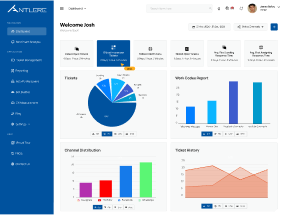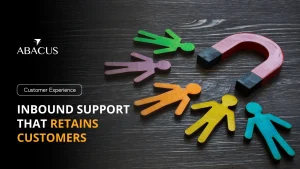As customer experience takes precedence in the world today, this is where a contact center has an essential impact on its customers first-hand perception of a brand. Each touchpoint—from the telephone, email, a live chat, or social messaging—presents opportunities to have an engagement, share a resolution, and build memorable relationships with customers. Yet simply knowing how many calls you answered, or emails responded to, doesn’t tell you how effective these interactions are being for customers and if you are in turn delivering on your overall business objectives. That’s where customer engagement metrics enter the scene.
In this article, we’ll look at the top three metrics of customer engagement in contact centers and how measuring them enable businesses to build long term relationship with customers, deliver operational efficiency and drive success over the longer haul.
First things first,
What Does Customer Engagement Mean in a Contact Center?
Customer engagement within a contact center efers to the ongoing interactions between your customers and your brand across every type of channel. It’s separate from answering questions or solving problems, it’s about a relationship. Listening customers feel heard, valued, and understood — characteristics which when present also contribute to more customers remaining loyal to the brand.
These encounters is more than just transactions, they are open and responsive listening conversations and solutions tailored to meet the customer experience. Every interaction, be it an inbound call, a chat session or a social media engagement metric, is a moment of truth that can help in creating an impression about the company.
Making sense of Customer Engagement metrics in Contact Centers
customer engagement analytics Customer engagement analytics are essential for sustaining customer satisfaction as well as loyalty. By tracking key engagement metrics, contact centers can be sure their teams aren’t simply answering questions but delivering valuable experiences that impact customers’ decisions on whether to continue engaging with the brand.
By measuring these metrics, contact centers are enabled to:
- Assess how well customer inquiries are answered.
- Find opportunities where the level of engagement be enhanced
- Enhance customer satisfaction and loyalty.
- Monitor performances and make resource allocation as efficient as possible.
- Train employees extensively to improve the quality of engagement.
Key Call Center Customer Engagement Metrics
Now, let’s jump right into the critical metrics to track user engagement in contact centers. These metrics tell you how your contact center is performing in terms of relationship-building with the customer and value delivery at every touchpoint.
1- First Contact Resolution (FCR)
First Contact Resolution (FCR): The share of customer issues that are solved during the first point of contact. Among the top of the most important engagement metrics When a customer needs to reach out to the center multiple times to sort out a query, it shows inefficiency which may lead to frustration and dissatisfaction.
How to measure:
Formula:
FCR= Total Unique Customers that you resolved their query in First Attempt
If your FCR scores are high, this means your agents are able to effectively resolve customer issues on the first attempt, which increases customer satisfaction. Low FCR can indicate problems, such as ineffective knowledge management, lack of training, or an overburdened system that needs work.
2- Customer Satisfaction (CSAT)
Customer Satisfaction (CSAT) is one of the simplest and most childlike powerful metric that tells how satisfied a customer is with his interaction with the contact center. It most typically includes a survey after the interaction, in which customers are asked to rate their experience on a scale (typically from 1 to 5 or 1 to 10).
How to measure:
Formula:
CSAT = Total positive responses / Number of Survey response x 100
CSAT is a snapshot of how well your team is engaging with customers. A high Customer Satisfaction Score means your customers feel their needs are being considered and their time is being respected. On the flip side, a low CSAT might indicate training, customer service delivery, or issue complexity problems.

3- Net Promoter Score (NPS)
Customer loyalty and whether they would refer your company: Net Promoter Score (NPS) NPS is a measure of how customers feel about your brand post-contact center interaction and provides a snapshot of overall satisfaction.
How to measure:
Ask customers:
The question might be framed as: “On a scale of 0 to 10, how likely are you to recommend our brand to friends and family?”
Users respond and based on their responses they are classified into 3 categories:
- Promoters (9-10): Customers who buy your brand and what you do.
- Passives (7-8): happy, but aren’t specifically recommending your brand.
- Detractors (0-6): Unhappy customers that can hurt your brand image.
The formula for NPS is:
% promoters – % detractors
Performing well on NPS means customers are well-engaged; low NPS suggest where to focus engagement engagement efforts.

4- Average Handle Time (AHT)
Average Handle Time (AHT) — the average time that an agent spends on resolving customer issues (including the time of speaking, the hold time, and the time to follow up). AHT is significant to operational efficiency, but it needs to be balanced with the quality of service provided. Low AHT suggest pressure to quickly cut the call, while high AHT can indicate ineffectiveness or high touch issues.
How to measure:
Formula:
(Total Talk Time + Hold Time + After-Call Work Time) / Total Number of Calls
Well, a low AHT could be a sign that an agent performed quicker service; however, this speed should never be to the detriment of the customer experience! It’s about striking a fine balance between efficiency on the one hand and resolving issues effectively on the other.
5- Customer Effort Score (CES)
Customer Effort Score (CES) is a measurement of how much work a customer has to do to fix an issue with your contact center. This principle says that lowering customer effort increases customer satisfaction and consequently — loyalty. It’s frequently combined with other metrics such as FCR and CSAT to gauge the overall customer experience.
How to measure:
Ask customers:
It’s just a typical contact center script: “On a scale from 1 to 7, how easy was it for you to resolve your issue today?”
A low score means the customer struggled to resolve their issue — and that could point to process inefficiencies, or to agents who need better training or tools.
6- Abandonment Rate
The Abandonment Rate indicates how many customers hang up before speaking to an agent, due to long or frustrating waits. If the abandonment rate is high, it usually indicates that customers tend to lose patience and do not want to continue to engage in this process, which will result in bad perception of the brand.
How to measure:
Formula:
High abandonment indicates that you should make improvements to call routing or cut wait time, or that you should increase staffing levels to better accommodate peak periods.
How to Use Customer Engagement Metrics the Right Way
Having discussed main metrics, let’s talk about how to use them. Just collecting engagement data does not make sense. Improvements have to be made based on these metrics and they need to be analyzed and acted upon. Here’s how you can employ customer engagement analytics to maximize your contact center:
- Regular Monitoring and Assessment: Set up a mechanism for monitoring and prepare routine reports for performance evaluation. This further helps you to spot trends, patterns and areas of focus.
- Segmentation: Divide your customers by behavior, complexity of the issue, and the channel used. It lays the foundation for personalized methods which enhance customer service and engagement.
- Employee Training: When you can analyze engagement data engagement data, you can recognize many things for instance the lack of skills possessed by the agents. Give specific training to enhance customer service, decrease handling time, and boost customer satisfaction.
- Optimize Processes: Improve Processes as per these insights, so that call routing, agent scripting, and troubleshooting, etc., becomes seamless, enhancing response times and issue resolution.

Conclusion
Abacus Outsourcing acknowledges customer engagement metrics vital for improving service quality, increasing satisfaction, and fostering loyalty. We focus on key metrics such as (FCR), Customer Satisfaction (CSAT), and Net Promoter Score (NPS), leveraging data to enhance each customer interaction across the business.
It is not enough to make things right; we must focus on creating a relationship that is built to last and that will not only keep customers returning, but will also create a trail of new customers. Carefully chosen engagement analytics will transform contact centers into strategic assets that drive strong customer connections and bottom line growth.
Allow Abacus Outsourcing to help you transform every interaction into a chance for enduring connection and growth.










